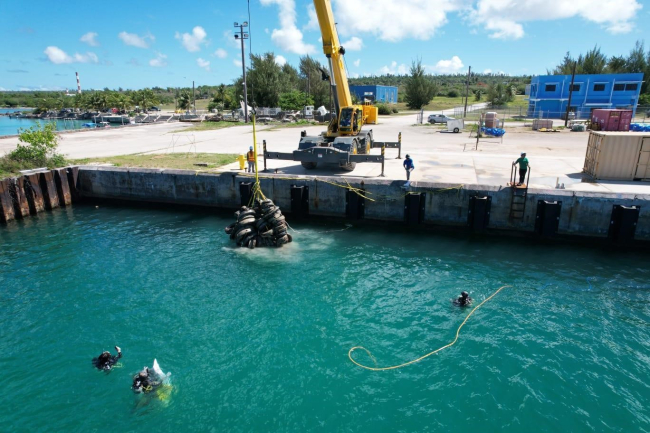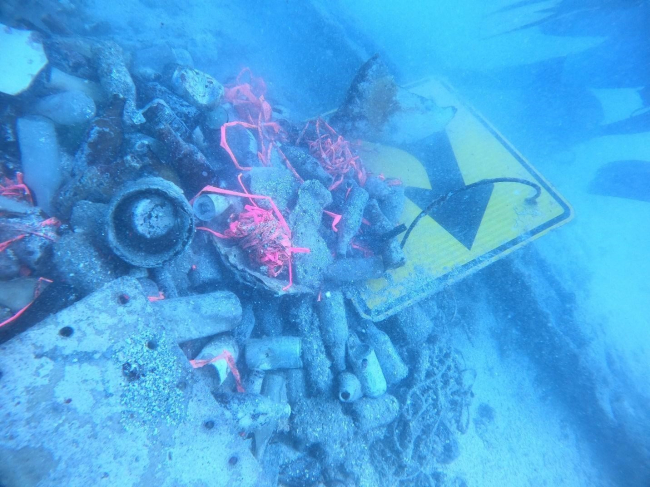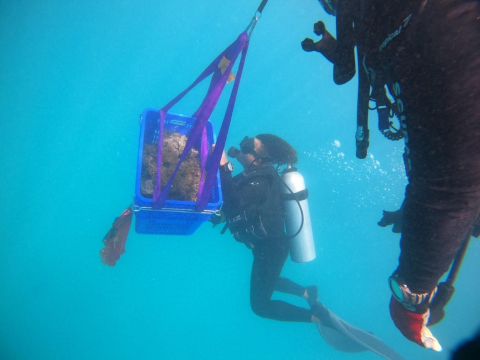Guest blog by: Becky Furey, Program Director, Mariana Islands Nature Alliance
The Northern Mariana Islands are increasingly susceptible to destruction from extreme weather conditions. In the past eight years, the islands of Saipan, Tinian, and Rota have experienced major damage to homes, schools, hotels, and critical infrastructure from Typhoons Soudelor, Yutu, and Mangkhut. In 2018, the eye of Super Typhoon Yutu passed directly over Tinian and Saipan and more than 3,000 homes were destroyed, power distribution systems were wrecked, and Saipan International Airport and Tinian Airport were severely damaged.

The Mariana Islands Nature Alliance (MINA) is an environmental conservation nonprofit and has been serving the Marianas since 2005. MINA fosters community and science-based conservation programs to enhance and sustain the Commonwealth of the Northern Mariana Islands’ (CNMI) environments and cultures. With the assistance of federal, commonwealth, and local government, and countless numbers of volunteers, the collection of debris created by these storms is nearly completed on land, but there are still large quantities of debris underwater and along coastlines on both Tinian and Saipan.
More than four years after the destructive forces of Typhoon Yutu ripped through Tinian and Saipan, its remnants continue to degrade natural habitats and attractions that jeopardize tourism and economic growth in the CNMI. In recognition of the critical need to continue cleanup efforts, and with assistance from the National Fish and Wildlife Foundation and the NOAA Marine Debris Program through the Hurricane Response Marine Debris Removal Fund, MINA and its partners are continuing marine debris removal activities and marine habitat restoration in the waters and surrounding coastal areas of Tinian Harbor, northern coastal areas, and along Saipan’s southern shallow waters and coastlines.
Broad-scale assessments are conducted to identify high density areas of marine debris. After completion of assessments, fine-scale surveys are done to determine the presence or absence of coral or endangered species. Vulnerable coral colonies are recorded, removed, and then translocated to a nearby reef area of similar habitat prior to the removal of debris. Debris is then removed by salvage teams where recyclable materials are transported to recycle centers while the rest goes to the landfill. To date, MINA has removed a total of 79,139 pounds of marine debris from Tinian and Saipan and over 55,000 pounds that has been recycled. The debris is made up of various metal, plastic, glass, tires, scaffolds, and other construction materials that were misplaced by the typhoons. MINA has restored 94.35 acres of marine habitat and successfully translocated a total of 293 coral colonies.
Although our islands will continue to be threatened as extreme weather events increase in frequency and intensity, MINA continues to assess coral health and remove debris left behind by storm activities. MINA looks forward to continuing our efforts to mitigate the risk of further damage to the CNMI’s natural resources, resident population, and visitors.
To learn more about MINA's efforts of removing typhoon-created marine debris from Tinian and Saipan, please contact Program Director Becky Furey at beckyfurey.mina@gmail.com.





